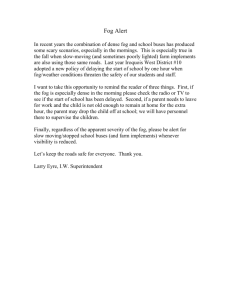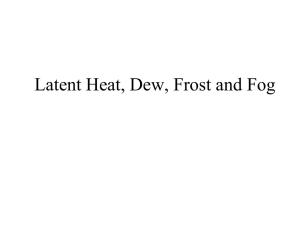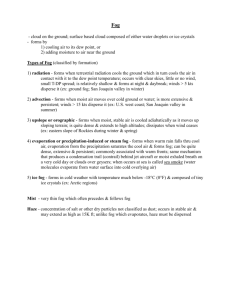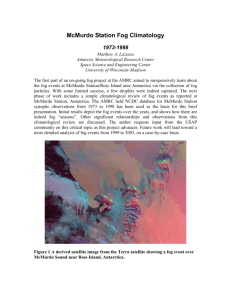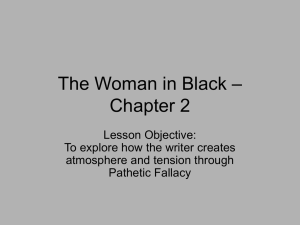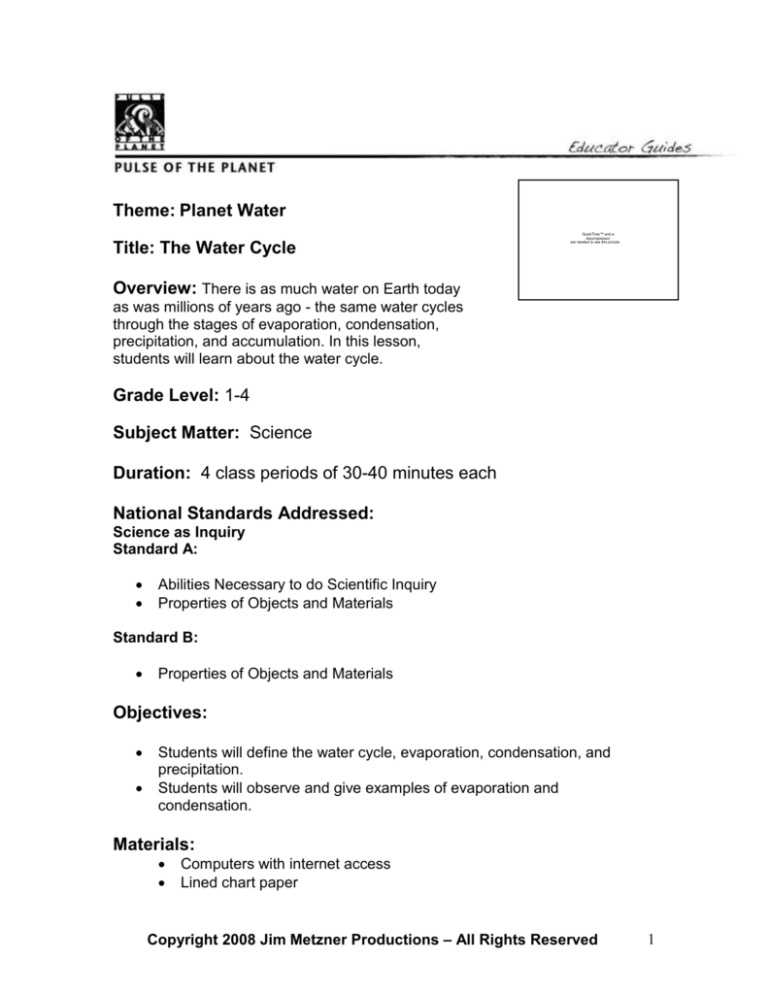
Theme: Planet Water
Title: The Water Cycle
QuickTime™ and a
decompressor
are needed to see this picture.
Overview: There is as much water on Earth today
as was millions of years ago - the same water cycles
through the stages of evaporation, condensation,
precipitation, and accumulation. In this lesson,
students will learn about the water cycle.
Grade Level: 1-4
Subject Matter: Science
Duration: 4 class periods of 30-40 minutes each
National Standards Addressed:
Science as Inquiry
Standard A:
Abilities Necessary to do Scientific Inquiry
Properties of Objects and Materials
Standard B:
Properties of Objects and Materials
Objectives:
Students will define the water cycle, evaporation, condensation, and
precipitation.
Students will observe and give examples of evaporation and
condensation.
Materials:
Computers with internet access
Lined chart paper
Copyright 2008 Jim Metzner Productions – All Rights Reserved
1
Unlined paper for students to draw
Procedure:
Part 1:
Ask children what they know about water. Ask them where water is found.
Record their responses on a chart.
Ask children what they know about rain. Record.
Lead class to the conclusion that water is found in many different places.
Teach children the ‘water cycle’.
o Teacher information can be found at this website:
http://ga.water.usgs.gov/edu/watercyclehi.html
o Use one or both of the following websites for students to view the
water cycle:
http://www.depweb.state.pa.us/justforkids/cwp/view.asp?a=3
&q=464789&justforkidsNav=|
http://www.kidzone.ws/WATER/
Discuss what they learned about the water cycle.
For grades 1-2, read book Down Comes the Rain by Franklin Branley. For
grades 3-4, read book Magic School Bus Wet All Over by Joanna Cole.
Discuss the meanings of the words evaporation, condensation, and
precipitation. Come up with a definition agreed on by the class and add it
to the chart started at the beginning of the lesson.
Part 2:
Evaporation/Condensation activities
Make two large circles on the chalkboard.
Take a wet sponge and wet the area inside the circle
Observe it for several minutes.
Discuss what happened.
Ask the children of what this is an example (evaporation).
Next fill two jars, of the same size, half full of water. Cover one with a lid.
Place both jars near a window.
Have children predict what they think will happen to the water in each jar.
Observe the jars every few days. Draw a line on the jar in marker where
the water level is each day you observe.
After a week or so discuss what happened to the water in each jar. (The
water in the jar with the lid stays at the same level. Condensation will be
observed on the sides of the jar. In the other jar, the water will have
evaporated.)
Part 3:
Students will make fog. Use website below.
http://www.weatherwizkids.com/fog.htm
Have children predict what a ‘fog net’ is.
Copyright 2008 Jim Metzner Productions – All Rights Reserved
2
o Listen to POP #846 Fog Nets.
o Discuss what they learned about a fog net. (A fog net is used in
places where water is scarce. The water vapor in the air collects
on nets. Water is then collected from the nets.)
Ask what part of the water cycle a fog net is using. (Condensation, water
vapor in the air collects on nets.)
Listen to POP #846 a second time. Have children listen for details on how
the fog net works and what it looks like.
Have each student draw, color, and label a picture of a fog net. They
should include: 2 posts, net, trough, pipe.
Part 4:
There is more information about fog nets at this website. The students can
also see pictures of another project using fog nets:
Haria Lanzarote Fog Project
http://www.harialanzarote.com/fog_project.htm
Review the water cycle. Use this interactive water cycle:
http://www.epa.gov/safewater/kids/kids_k-3.html
As an evaluation, have students draw and color a picture of the water
cycle. They should label evaporation, condensation, and precipitation.
Scroll down for more…
Copyright 2008 Jim Metzner Productions – All Rights Reserved
3
Additional Resources
Images
Name: Foggy Shots
URL: http://www.crh.noaa.gov/jkl/?n=fog_types
Caption: Various types of fog.
Credit: NOAA
Name: The Water Cycle
URL: http://ga.water.usgs.gov/edu/watercyclehi.html
Caption: Earth's water is always in movement and is always changing states,
from liquid to vapor to ice and back again.
Credit: USGS
Name: Radiation Fog 2
URL: http://en.wikipedia.org/wiki/Image:Radiation_fog_aubrey.JPG
Caption: Early morning radiation fog on a cool morning in Texas. Temperature is
45°F or 7°C.
Credit: Pat Parks
Name: Condensation Glasses
URL: http://ga.water.usgs.gov/edu/watercyclecondensation.html
Caption: Picture of glasses fogged with condensation, after being chilled and
going into a warm, moist room.
Credit: USGS
Name: Water Cycle 2
URL: http://earthobservatory.nasa.gov/Library/Water/water_2.html
Caption: In the hydrologic cycle, individual water molecules travel between the
oceans, water vapor in the atmosphere, water and ice on the land, and
underground water.
Credit: NASA / Hailey King
Web Links
The Water Cycle – USGS
http://ga.water.usgs.gov/edu/watercyclehi.html
The Water Cycle: A Multi Phased Journey – NASA
http://earthobservatory.nasa.gov/Library/Water/water_2.html
Fog Quest
http://www.fogquest.org/index.shtml
Copyright 2008 Jim Metzner Productions – All Rights Reserved
4
Fog Facts – Farmer’s Almanac
http://www.farmersalmanac.com/weather/a/fog_facts
Types of Fog – NOAA
http://www.crh.noaa.gov/jkl/?n=fog_types
The Water Cycle (diagram) – Scripps Institution of Oceanography
http://earthguide.ucsd.edu/earthguide/diagrams/watercycle/index.html
The Water Cycle – Learner.org
http://www.learner.org/interactives/weather/watercycle.html
Tropical Mountain Cloud Forests – United Nations Environment Programme
http://www.unep-wcmc.org/forest/cloudforest/index.cfm
Capture Fog Nets for Drinking Water, Tiactac Village – The Footprints Network
http://www.footprints.org.au/default.aspx?c=10&x1=21
Audio
Clouds’ Song – Kids Know It Network
http://www.kidsknowit.com/educational-songs/play-educationalsong.php?song=Clouds
Video
“Costa Rica Cloud Forest” – Google Video / Hila Science Videos
http://video.google.ca/videoplay?docid=-6167399031095889216
Articles
“Fog-Harvesting For Water - Clouds On Tap”
http://www.scienceinafrica.co.za/2003/march/fog.htm
“Fog” – BBC Online
http://www.bbc.co.uk/weather/features/understanding/fog.shtml
“Rainforests Harvest the Skies” – Science Daily
http://www.sciencedaily.com/releases/2002/02/020201075138.htm
“Cloud Harvest” – Utne Reader
http://www.utne.com/2000-07-01/CloudHarvest.aspx
Copyright 2008 Jim Metzner Productions – All Rights Reserved
5
Just for Kids
Stuff in the Sky – National Center for Atmospheric Research
http://eo.ucar.edu/kids/sky/clouds1.htm
The Water Cycle – Kidzone.com
http://www.kidzone.ws/WATER/
Other
Clouds in a Bottle (experiment) – NASA
http://kids.earth.nasa.gov/archive/nino/cloud.html
Fog Experiment – Weather Wiz Kids
http://www.weatherwizkids.com/fog.htm
Coloring Pages (scroll down) – Kidzone.com
http://www.kidzone.ws/WATER/
Make a Water Cycle Wheel! – EPA
http://www.epa.state.il.us/kids/fun-stuff/water-cycle/
Special thanks to the following scientists for their help with this
project:
Pulse of the Planet Programs: # 846 “Fog Nets”
Robert Schenmenauer
Executive Director
Fog Quest
Header Image
Name: Tree in Fog
Credit: NOAA
Copyright 2008 Jim Metzner Productions – All Rights Reserved
6


